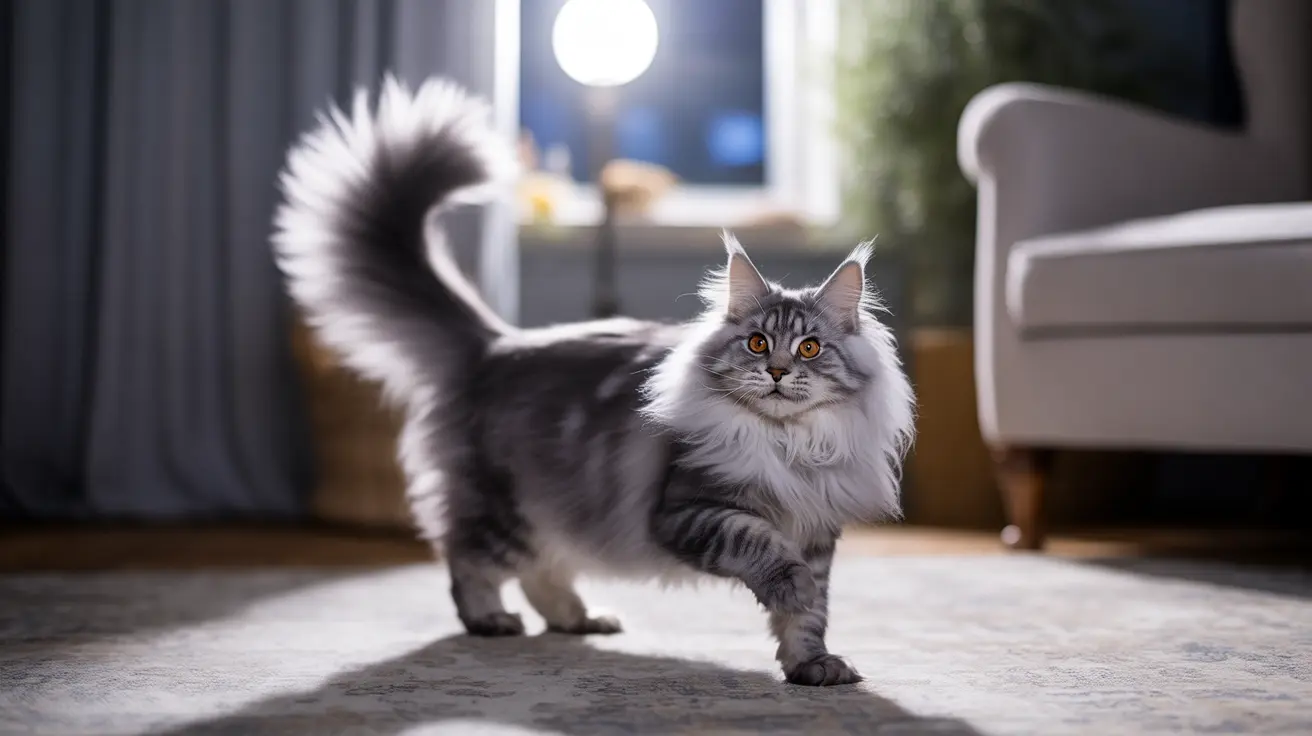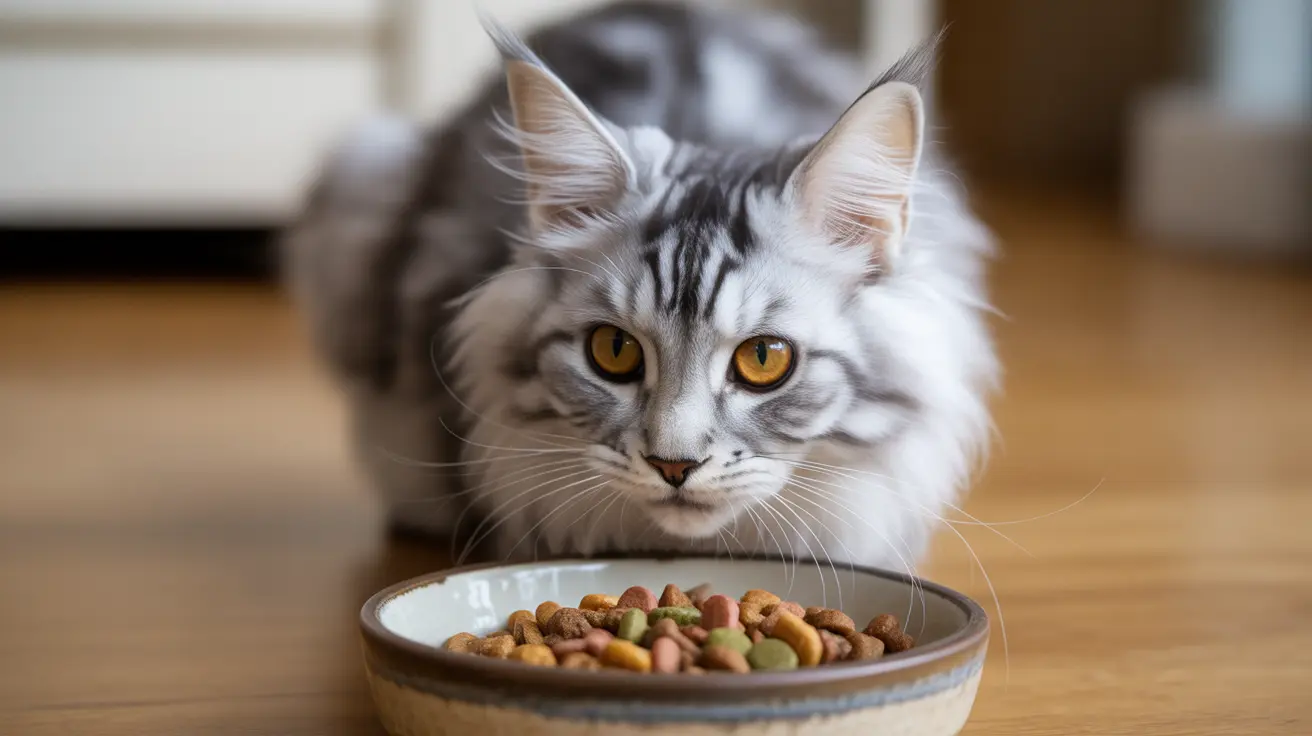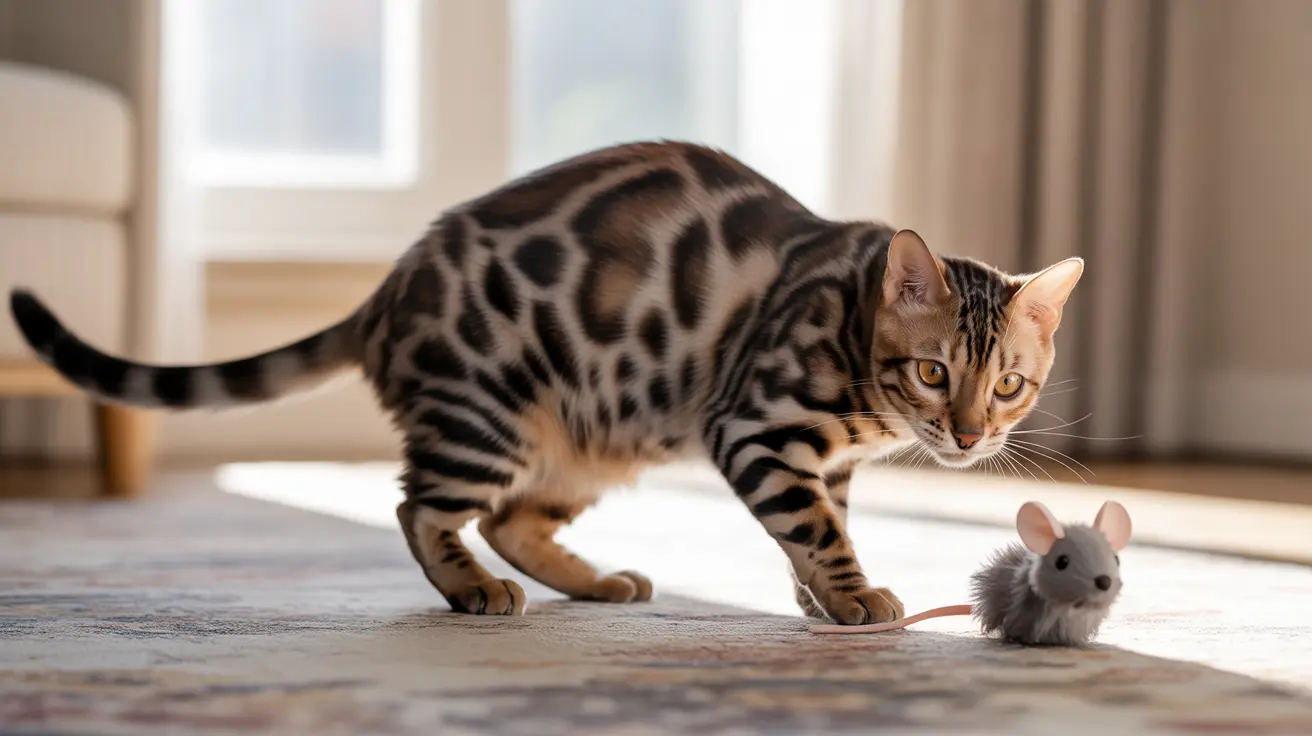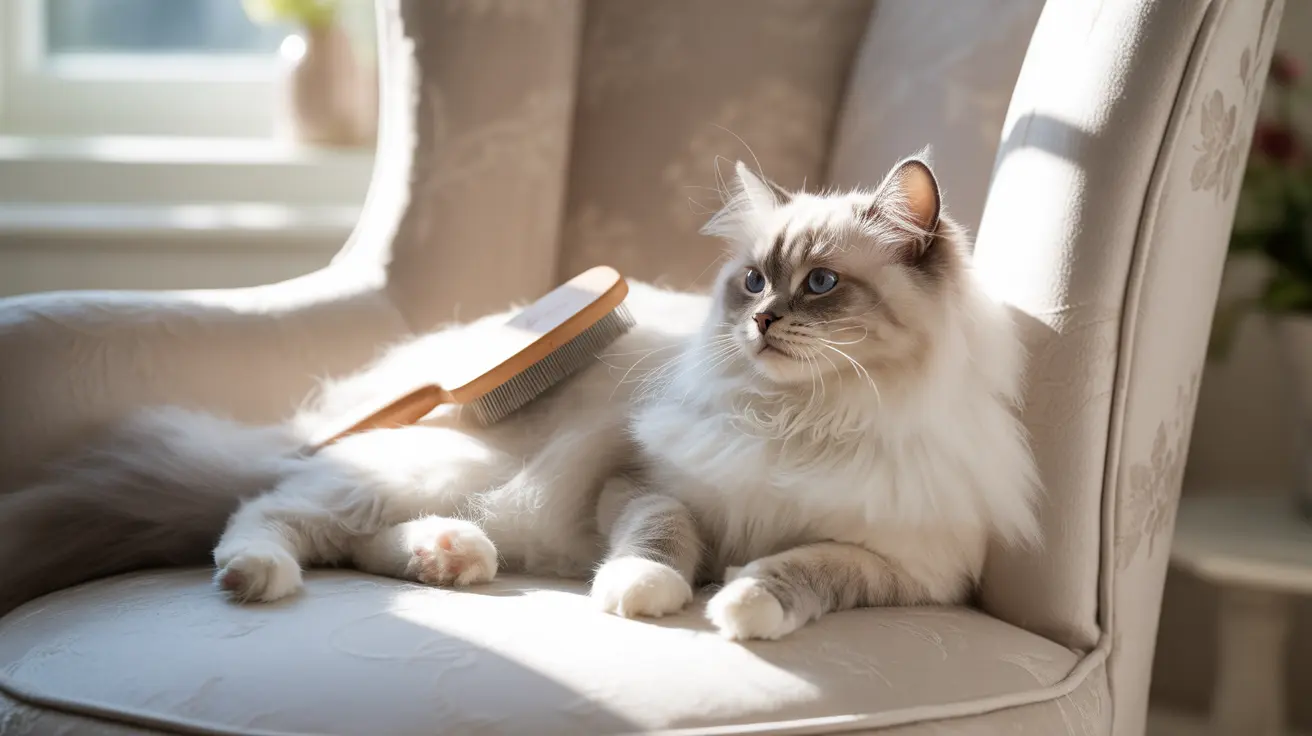Full Moon Effects on Cat Behavior: Understanding Your Feline's Lunar Restlessness
Have you ever noticed your cat acting unusually restless, vocal, or energetic during a full moon? You're not alone. Many cat owners report significant behavioral changes in their feline companions during lunar phases, particularly when the moon is at its brightest. While the phenomenon has sparked countless discussions among pet owners and even some veterinary professionals, the relationship between lunar cycles and cat behavior remains one of the most intriguing mysteries in feline science.
The question of whether full moon effects on cat behavior are real or simply coincidental has captured the attention of researchers, veterinarians, and cat enthusiasts alike. From increased emergency veterinary visits to reports of heightened activity and vocalization, the anecdotal evidence continues to mount. Understanding these potential connections can help you better prepare for and manage your cat's behavior during different lunar phases, ensuring both you and your feline friend enjoy peaceful nights regardless of what's happening in the sky above.
Scientific Evidence: What Research Tells Us About Cats and Moon Phases
While comprehensive scientific studies specifically examining full moon effects on cat behavior remain limited, some interesting research has emerged from veterinary institutions. The University of Colorado College of Veterinary Medicine conducted notable research concluding that cats were 30% more likely to become injured near or during the full moon. Additionally, another study claimed a 23% increase in cat visits to veterinary clinics during full moon periods, though this research remains unsubstantiated by peer review.
Perhaps the most significant scientific investigation came from Colorado State University in 2007, which analyzed approximately 12,000 emergency veterinary cases. Their findings revealed that emergency room visits for cats increased by 23% during fuller moon phases, including waxing gibbous, full, and waning gibbous periods. Importantly, this study did not find an increase in aggressive behavior or trauma related to aggression, suggesting that increased luminosity might be a potential factor in heightened activity or injuries rather than behavioral aggression.
However, it's crucial to note that there is no comprehensive scientific consensus establishing a direct causal relationship between the lunar cycle and consistent changes in feline behavior. Many veterinary and animal care professionals report busier emergency departments during full moon nights, but these correlations may be influenced by factors such as owner reporting bias and increased attention to behaviors during full moons.
Common Behavioral Changes Observed During Full Moons
Cat owners frequently report a variety of behavioral modifications in their pets during full moon periods. These observations, while anecdotal, show remarkable consistency across different households and geographic locations. The most commonly reported full moon effects on cat behavior include hiding in unusual spots, increased clinginess toward their human companions, and significantly higher levels of restlessness that can disrupt household routines.
Many owners also notice greater playfulness and increased mischievousness during lunar peaks, with cats engaging in activities they typically avoid during other times of the month. Enhanced sociability with other cats in multi-pet households is another frequently observed phenomenon, along with notably louder meowing and increased vocalization that can continue throughout the night.
Indoor cats may exhibit altered behavior patterns due to shadows cast by moonlight filtering through windows and doors. Since cats are naturally sensitive to changes in their environment, these new visual stimuli can trigger sudden bursts of activity commonly known as "zoomies," regardless of the specific lunar phase.
The Science Behind Heightened Feline Sensitivity
Understanding why cats might be more susceptible to lunar influences requires examining their exceptional sensory capabilities and biological rhythms. Cats possess extraordinarily sensitive senses that allow them to detect subtle environmental changes that humans cannot perceive. Their superior night vision, acute hearing, and heightened awareness of atmospheric pressure changes make them potentially more responsive to the environmental shifts that accompany different moon phases.
One leading theory suggests that the full moon's effect on gravity and increased nighttime illumination could alter circadian rhythms in both pets and humans. These rhythms regulate physical and behavioral fluctuations over 24-hour periods, influencing critical biological functions including heart rate, sleep patterns, hormone production, body temperature, and blood pressure. When these natural rhythms become disrupted, behavioral changes often follow.
The increased luminosity during full moons provides another plausible explanation for behavioral changes. Some experts hypothesize that cats may become more active during full moon periods due to the enhanced moonlight encouraging natural exploration or hunting behaviors. This theory aligns with cats' crepuscular nature, as they are naturally most active during dawn and dusk periods when light conditions are transitional.
Indoor vs. Outdoor Cats: Different Responses to Lunar Phases
The environment in which cats spend their time significantly influences how they respond to lunar changes. Outdoor cats and those with access to both indoor and outdoor spaces may experience more pronounced full moon effects on their behavior due to direct exposure to increased nighttime illumination and other environmental factors associated with lunar phases.
Interestingly, some studies suggest that outdoor cats may actually be most nocturnally active during new moon phases when nights are at their darkest. This behavior pattern allows them to leverage their superior night vision for hunting and territorial activities while remaining less visible to potential predators or competitors.
Indoor cats, while seemingly protected from direct lunar influences, can still exhibit behavioral changes during full moons. The increased moonlight penetrating through windows creates different shadow patterns and lighting conditions within the home environment. These subtle changes in familiar surroundings can trigger heightened alertness and activity in cats, who are naturally attuned to environmental modifications.
Practical Management Strategies for Full Moon Restlessness
If your cat consistently exhibits restless or disruptive behavior during full moons, several practical approaches can help manage these challenging periods. Increasing daytime play sessions and mental stimulation before anticipated full moon nights can help exhaust your cat's energy reserves, promoting better nighttime rest regardless of lunar activity.
Creating a calming indoor environment becomes particularly important during full moon periods. Consider using blackout curtains or blinds to minimize the impact of increased moonlight on your cat's sleep environment. Providing additional hiding spots, comfortable bedding in quiet areas, and maintaining consistent routines can help reduce stress and anxiety associated with environmental changes.
For cats exhibiting intense anxiety or significantly altered behavior during full moons, consultation with a veterinarian may be beneficial. In some cases, anti-anxiety medication might be prescribed to help manage severe stress responses. However, most cats can be successfully managed through environmental modifications and increased attention to their comfort needs.
Cultural Perspectives and Folklore Surrounding Cats and Moon Phases
The association between cats and lunar cycles extends far beyond modern pet ownership concerns, deeply rooted in cultural traditions and folklore from around the world. Folk legend has long connected the moon with behavioral changes in both humans and animals, though modern research has largely debunked myths linking the full moon to increased crime rates or emergency room visits in human populations.
In various cultural traditions, some pet owners and practitioners of astrology consider the new moon a period of low energy and quiet reflection, while the full moon is associated with heightened activity and emotional intensity in pets. These interpretations, while lacking strong scientific backing, reflect humanity's long-standing fascination with lunar influences on earthly behavior.
Understanding these cultural perspectives can provide context for why many pet owners remain convinced of lunar effects on their cats, even in the absence of definitive scientific proof. The power of expectation and confirmation bias may contribute to owners noticing and remembering behavioral changes that occur during full moons while overlooking similar behaviors during other lunar phases.
Creating a Supportive Environment for Your Cat
Whether or not your cat experiences full moon effects on their behavior, creating a consistently supportive and enriched environment benefits their overall well-being. Pet owners concerned about lunar-related behavior changes should focus on careful observation of their cats, noting specific patterns and triggers that may contribute to restlessness or anxiety.
Providing environmental enrichment through interactive toys, scratching posts, perches near windows, and regular play sessions helps maintain your cat's mental and physical health regardless of lunar phases. Establishing predictable routines for feeding, play, and sleep can provide stability that counteracts potential disruptions from environmental changes.
For outdoor cats or those with outdoor access, implementing safety measures becomes particularly important during bright moonlit nights. Using reflective collars and ensuring secure outdoor enclosures can help reduce injury risks while allowing cats to experience natural environmental stimuli safely.
Frequently Asked Questions
- Q: Is there scientific proof that full moons affect cat behavior?
A: While some studies show increased veterinary visits during full moon phases, there is no comprehensive scientific consensus establishing a direct causal relationship between lunar cycles and consistent feline behavioral changes. Most evidence remains anecdotal.
- Q: What specific behaviors do cats exhibit during full moons?
A: Commonly reported behaviors include increased restlessness, hiding in unusual places, heightened clinginess, greater playfulness, more vocalization, and enhanced sociability with other cats. However, these behaviors haven't been scientifically proven to connect directly to lunar cycles.
- Q: Do indoor cats experience full moon effects differently than outdoor cats?
A: Indoor cats may be less directly affected but can still respond to increased moonlight creating different shadow patterns inside homes. Outdoor cats may experience more pronounced effects due to direct exposure to enhanced nighttime illumination.
- Q: How can I help my cat if they become restless during full moons?
A: Increase daytime play and mental stimulation, create a calming environment with blackout curtains, maintain consistent routines, and provide additional comfort items. For severe anxiety, consult your veterinarian about potential anti-anxiety treatments.
- Q: Are cats more likely to get injured during full moons?
A: Research from the University of Colorado suggests cats were 30% more likely to become injured near or during full moons, possibly due to increased activity and time spent outdoors in brighter nighttime conditions.
- Q: Should I keep my cat indoors during full moons?
A: There's no need to confine outdoor cats specifically during full moons, but using safety measures like reflective collars and ensuring secure outdoor access can help reduce injury risks during any nighttime outdoor activity.
- Q: Could my perception be influencing what I observe in my cat's behavior?
A: Yes, confirmation bias and increased attention to pet behavior during full moons may influence what owners notice and remember. It's important to observe patterns objectively and consider other environmental or health factors that might affect your cat's behavior.
Conclusion
The relationship between full moon effects on cat behavior remains an fascinating intersection of science, folklore, and pet ownership experience. While definitive scientific proof continues to elude researchers, the consistency of owner reports and some veterinary data suggest that lunar phases may indeed influence feline behavior in subtle ways. Whether these effects result from increased nighttime illumination, disrupted circadian rhythms, or heightened sensitivity to environmental changes, many cat owners find value in preparing for potential behavioral shifts during full moon periods.
Rather than dismissing these observations as mere superstition, pet owners can use this awareness as an opportunity to better understand and support their feline companions. By focusing on environmental enrichment, consistent routines, and attentive care regardless of lunar phases, you can help ensure your cat's comfort and well-being throughout all cycles of the moon. Remember that every cat is unique, and what matters most is observing your individual pet's patterns and responding with patience, understanding, and appropriate care.






